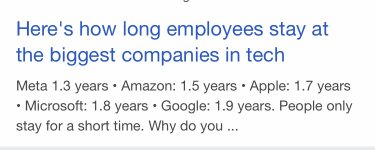I suppose this means we could be working with Elon Musk at some point in time.
Musk’s SpaceX is frontrunner to build Trump’s ‘Golden Dome’ missile shield
SpaceX-led group is pitching the Pentagon on a ‘subscription model’ for missile defense
Reuters in Washington
Fri 18 Apr 2025 02.33 AEST
Share
Elon Musk’s SpaceX and two partners have emerged as frontrunners to win a crucial part of Donald Trump’s “Golden Dome” missile defense shield, six people familiar with the matter said.
Musk’s rocket and satellite company is partnering with the software maker Palantir and the drone builder Anduril on a bid to build key parts of Golden Dome, the sources said, which has drawn significant interest from the technology sector’s burgeoning base of defense startups.
In his 27 January executive order, Trump cited a missile attack as “the most catastrophic threat facing the United States”.
All three companies were founded by entrepreneurs who have been major political supporters of Trump. Musk has donated more than a quarter of a billion dollars to help elect Trump, and now serves as a special adviser to the president working to cut government spending through his so-called “department of government efficiency”.
Despite the Pentagon’s positive signals to the
SpaceX group, some sources stressed the decision process for Trump’s Golden Dome was in its early stages. Its ultimate structure and who is selected to work on it could change dramatically in the coming months.
The three companies met with top officials in the Trump administration and the Pentagon in recent weeks to pitch their plan, which would build and launch 400 to more than 1,000 satellites circling the globe to sense missiles and track their movement, sources said.
A separate fleet of 200 attack satellites armed with missiles or lasers would then bring enemy missiles down, three of the sources said. The SpaceX group is not expected to be involved in the weaponization of satellites, these sources said.
One of the sources familiar with the talks described them as “a departure from the usual acquisition process. There’s an attitude that the national security and defense community has to be sensitive and deferential to
Elon Musk because of his role in the government.”
SpaceX and Musk have declined to comment on whether Musk is involved in any of the discussions or negotiations involving federal contracts with his businesses.
The Pentagon did not respond to detailed questions from Reuters, only saying it will deliver “options to the president for his decision in line with the executive order and in alignment with White House guidance and timelines”.
The White House, SpaceX, Palantir and Anduril also did not respond to questions.
In an unusual twist, SpaceX has proposed setting up its role in Golden Dome as a “subscription service” in which the government would pay for access to the technology, rather than own the system outright.
The subscription model, which has not been previously reported, could skirt some Pentagon procurement protocols allowing the system to be rolled out faster, the two sources said. While the approach would not violate any rules, the government may then be locked into a subscription and lose control over its ongoing development and pricing, they added.
Some Pentagon officials have expressed concerns internally about relying on the subscription-based model for any part of the Golden Dome, two sources told Reuters. Such an arrangement would be unusual for such a large and critical defense program.
The US space force general Michael Guetlein has been in talks on whether SpaceX should be the owner and operator of its part of the system, the two sources said. Other options include having the US own and operate the system, or having the US own it while contractors handle operations. Guetlein did not respond to a request for comment.
The retired air force general Terrence O’Shaughnessy, a top SpaceX adviser to Musk, has been involved in the company’s recent discussions with senior defense and intelligence leaders, the two sources said. O’Shaughnessy did not respond to requests for comment.
Should the group led by SpaceX win a Golden Dome contract, it would be the biggest win for Silicon Valley in the lucrative defense contracting industry and a blow to the traditional contractors.
However, those long-standing contractors, such as Northrop Grumman, Boeing and RTX are expected to be big players in the process as well, people familiar with the companies said. Lockheed Martin put up a webpage as a part of its marketing efforts.
SpaceX is pitching for the part of the Golden Dome initiative called the “custody layer”, a constellation of satellites that would detect missiles, track their trajectory, and determine if they are heading toward the US, according to two sources familiar with SpaceX’s goals.
SpaceX has estimated the preliminary engineering and design work for the custody layer of satellites would cost between $6bn and $10bn, two of the sources said. In the last five years, SpaceX has launched hundreds of operational spy satellites and more recently several prototypes, which could be retrofitted to be used for the project, the sources said.
Reuters reviewed an internal Pentagon memo from the defense secretary, Pete Hegseth, issued shortly before a 28 February deadline to senior Pentagon leadership asking them for initial Golden Dome proposals and calling for the “acceleration of the deployment” of constellations of satellites.
The time frame could give SpaceX an advantage because of its fleet of rockets, including the Falcon 9, and existing satellites that could be repurposed for the missile defense shield, the people familiar with the plan said.
SpaceX-led group is pitching the Pentagon on a ‘subscription model’ for missile defense

www.theguardian.com








